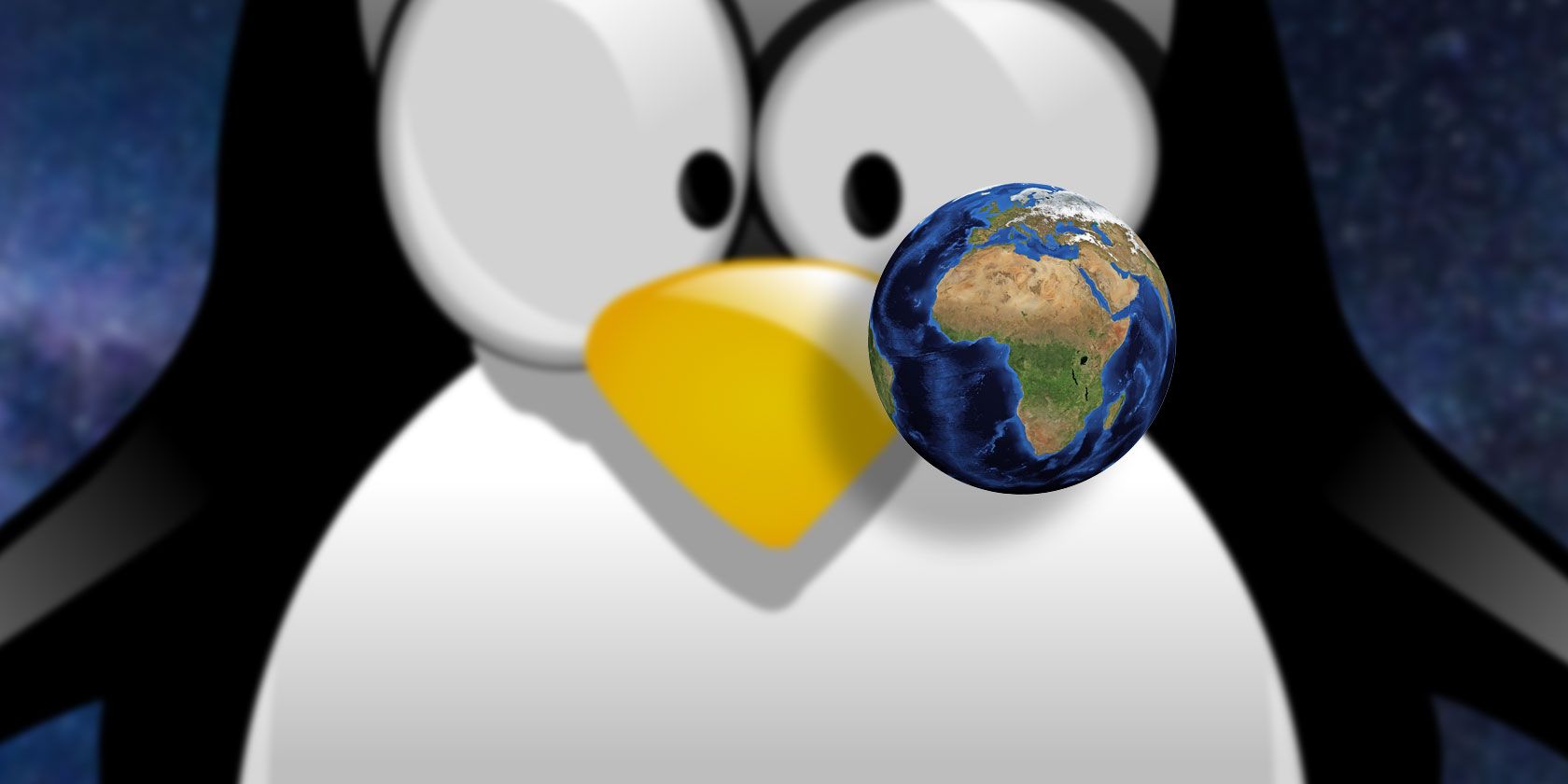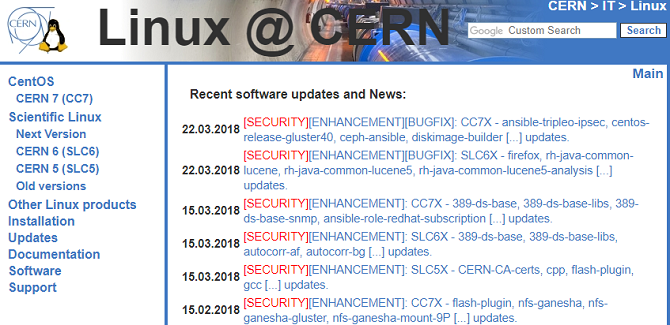
Linux doesn’t only run on home computers. You will also find it in far more exciting devices and projects. It’s particularly common where the proprietary nature of Windows and macOS is not suitable.
Let’s take a closer look who uses Linux and consider some of most unusual ways people and companies around the world.
1. Large Hadron Collider

The Large Hadron Collider (LHC) is the world’s largest and most powerful particle accelerator. It’s a 17-mile long circular tube buried 175 meters below the French-Swiss border near Geneva.
It’s common knowledge that the facility has been a resounding success from a scientific perspective. But the LHC is also a computing miracle.
In its first 12 months of operation, the LHC produced more than 50 petabytes of data. The team needed 170 computing centers across 42 countries to analyze it all in a timely manner. It is the largest distributed computing grid in the world.
Linux runs both the LHC itself and the associated data centers. To be more precise, the LHC uses a modified version of Scientific Linux.
2. Air Traffic Control in the United States
In 2006, the Federal Aviation Administration (FAA) migrated its entire computing operation over to Linux, including all the machines that track planes while they’re on radar.
The organization moved from a proprietary form of Unix to Red Hat Enterprise Linux.
The decision was part of a wider FAA decision to move away from proprietary software and instead focus on apps using Java, web services, open-source software, and Oracle products.
Fast-forward to today, and Linux is responsible for the safety of the 8,000 planes that are in the sky above the US at any given time.
3. Putting Milk on Your Cornflakes

DeLaval isn’t a name that many people will recognize, but it’s one of the largest farm equipment manufacturers in the world. The company enjoys annual sales in excess of $1 billion.
One of the company’s most popular products is its automatic cow milking machine. It lets farmers extract milk from their herd using a wireless remote control.
And guess what? Yes, it runs on Linux. The operating system is directly responsible for extracting the milk you put on your cornflakes every morning!
4. Self-Driving Cars
Linux is powering the self-driving car revolution.
Google’s autonomous car computers run Linux, while early prototypes from both GM and Volkswagen also chose the operating system. Indeed, Google’s first successful foray into the market—a self-driving Toyota Prius—ran on Ubuntu.
Since those early days, we’ve seen the creation of Automotive Grade Linux (AGL). It’s a car computer operating system that’s a collaboration between car manufacturers, suppliers, and technology companies in a bid to create a de facto industry standard for automotive applications.
Today, you can find AGL in models from Toyota, Ford, Mazda, Honda, Subaru, and Suzuki.
5. Tsunami Sensors
Ever since the 2004 Indian Ocean earthquake and tsunami killed 280,000 people in South-East Asia, tsunami prediction has become a vital part of public safety for people living in earthquake-prone low-lying areas. (If you’re at risk, technology can help you survive natural disasters).
One of the leading manufacturers of tsunami sensors is American company Teledyne Technologies.
The company’s sensors—which run on Linux—come complete with their own modem and use acoustics to send the data to each other underwater.
Bottom line? Linux is changing the world and saving lives.
6. North Korea’s State-Run Operating System

There is a lot we don’t know about North Korea, but we do know that the country has an impressive state-wide computer operating system that’s based on Linux. It’s called Red Star OS.
It’s currently up to version 4.0 (released in January 2019), but 2008’s version 1.0 remains the most popular. An installation CD costs the equivalent of about 25 cents.
The operating system includes Naenara web browser (which is a Firefox fork). OS version 1.0 and 2.0 took their visual inspiration from Windows XP. Version 3.0 and 4.0 look more akin to macOS.
7. Nuclear Submarines
In 2004, Lockheed Martin delivered a new nuclear submarine to the United States government. The vessel’s sonar ran on a Red Hat Linux-based operating system combined with Apple Xserve servers. It was a first for submarine sonar at the time.
Lockheed Martin chose Linux for two important reasons.
Firstly, it allowed the sonar to run in a low heat, low power consumption mode, both of which are essential features on a submarine.
Secondly, the end of the reliance on embedded systems allowed the crew to adapt to various formats of data and encryption while at sea.
8. San Francisco’s Traffic Control System
In 2011, the city of San Francisco decided it was time to update its traffic control systems. Given that the city is the 30th most congested in the world, it’s vital that its traffic management systems are reliable. Waze and in-car GPS apps just won’t cut it.
The city authorities decided that Linux would power the system. It was built around a Freescale PowerQUICC II Pro processor and was designed to meet the national Advanced Transportation Controller (ATC) standards.
Sounds great, but San Francisco now faces 25 percent more congestion than it did when the system was implemented. Still, we’ll put that down to the west coast drivers rather than a failing of the operating system.
9. The International Space Station
One of the most interesting projects that uses Linux is the International Space Station (ISS). When the ISS was first launched in 1998, its onboard laptops ran on Windows 95. Over time, NASA upgraded them to Windows 2000, Windows XP, and Windows 7.
But in 2013, the Manager of Space Operations Computing (SpOC) for NASA, Keith Chuvala, admitted the entire array of more than 100 machines would be migrated to Linux. His comments didn’t make comfortable reading for Microsoft:
“We migrated key functions from Windows to Linux because we needed an operating system that was stable and reliable—one that would give us in-house control. So if we needed to patch, adjust, or adapt, we could.”
Debian was the Linux distro that the NASA team eventually settled on using.
Linux Across the World
So, let’s have a quick recap about the Linux world we’re now living in:
- Large Hadron Collider
- Air traffic control
- Farm equipment
- Self-driving cars
- Tsunami warning systems
- North Korean computers
- Nuclear submarines
- Traffic control systems
- International Space Station
Clearly, Linux is everywhere. And in this article, we’ve not even touched on “fun” everyday uses such as smart TVs, Roku sticks, Nest thermostats, Kindle e-readers, and all the rest.
And even though we’ve only listed nine unusual uses of Linux in the world, the wide variety of the examples will hopefully give you an appreciation for how widespread the operating system is.
If you’d like to learn more, read about why Linux’s actual market share is much higher than you probably realize.
Read the full article: 9 Ways Linux Is Taking Over the World
from MakeUseOf https://ift.tt/2qa6Cj9
via IFTTT

0 comments: